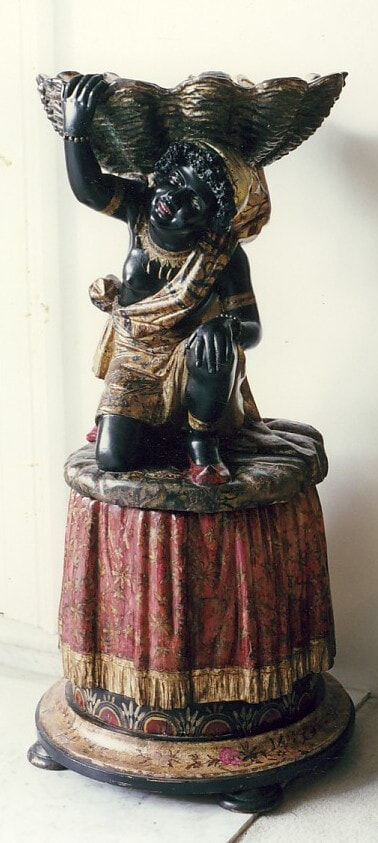THE ART OF LIGHTING: WAX CANDLES

THE ART OF LIGHTING: WAX CANDLES
By Anne Glynn
The golden age of lighting by wax candles began in the 18th century and lasted until the first quarter of the 19th century.
During this period, light-fittings using quality design and craftsmanship were used to display wealth and status in rich households. Illumination was enhanced by the reflection of candle light from mirrors, burnished surfaces like gilded furniture and picture frames, wall sconces, pier glasses, many of which had provision for candle branches (A0392-1989). Even for the upper classes, lighting was used sparingly, except if entertaining, when it became part of an elaborate display of wealth, for example in chandeliers, candelabras and torchères. For everyday use however, a candle in a candlestick was sufficient for most needs.
There was a religious significance in beeswax candles as they represented God bringing light and goodness to a dark and sinful world. Candles were lit around the body or grave of a deceased person to keep evil spirits away. It followed that only the best beeswax candles were used for religious purposes.
In 1484, wax chandlers were granted a Royal Charter by which they would ensure quality control of beeswax candles and failure to provide unadulterated candles resulted in destruction of one’s goods, fines and even imprisonment. By the 15th century wax candles cost two shillings or more a pound, while tallow candles fetched six pence a pound. The ordering of wax candles in grand houses was the responsibility of the housekeeper who would have special wooden boxes with lids to keep vermin away.
Wax, after being taken from the beehive was rendered and refined to remove impurities. The best quality beeswax was bleached, resulting in a white, translucent and odourless candle. The wick, in the Middle Ages was made of flax then later of twisted cotton and if made properly, the finished candle needed little attention and no trimming, unlike the tallow candle. The candles were made by hand, by ladling the heated wax over suspended wicks to build up layers- a long and laborious process which added to the high cost of the finished candle. The candle was then rolled into a cylindrical shape on a moist hard wood surface to make a uniform size.
Spermaceti candles were made from a clear, high-quality oil that partly solidified on exposure to air and which was obtained from sperm whales, that were captured in the Atlantic and Pacific oceans in the late 18th - mid 19th centuries. The light produced by these candles was four times brighter than tallow candles and lasted twice as long. The smell was pleasanter and could be made in moulds making them cheaper to produce and the wick did not require trimming.
Paraffin wax was extracted from crude oil and after refining could become a white odourless solid slab that could be moulded into candles. By the end of the 19thcentury 90% of all candles were made from paraffin and were readily available. These candles rivalled all other types at a fraction of the cost so were available to all classes of society. Soy wax is a relatively new natural and renewable alternative to paraffin, based on soy bean oil which is hydrogenated to solidify the wax at room temperature. Soy wax is generally believed to be very clean burning, with no soot and fewer carbon dioxide emissions in comparison to candles made of paraffin wax. Soy wax also lasts up to 50% longer in burning time compared to paraffin wax candles of the same size.
These days, fragrances are used to scent candles for the home. Natural plant-based pure essential oils carry various therapeutic benefits. They also provide a warm and glowing atmosphere in today’s houses. Even after gas and electricity was available in the 19th century, candles remained the primary source of artificial lighting for many homes. As one writer wrote in 1881, “candlelight is the only artificial light by which beauty shows all its beauty.”
This article was first published in fairhall , Issue 17, March 2016, pp 12.
Journals
About US
Explore
Contact
VISIT
See our VISIT page for hours and directions
BY PHONE
+61 3 9416 2515
BY POST
PO Box 79, East Melbourne VIC 8002
ONLINE
General enquiries
Membership enquiries
Shop
Donation enquiries
Subscribe to E-Newsletter



